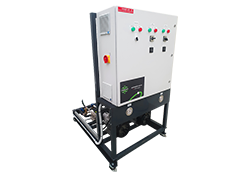Understanding Greenhouse Fogging
Greenhouse fogging involves the use of fine mist or fog to create a humid environment within the greenhouse. This is achieved through specialized equipment that disperses water droplets into the air, raising humidity levels and helping to maintain a stable microclimate. Unlike traditional irrigation systems that water plants directly, fogging primarily focuses on atmospheric conditions, ensuring that plants receive the right amount of moisture without the risk of waterlogging.
Benefits of Greenhouse Fogging
Optimal Humidity Control: One of the primary advantages of greenhouse fogging is its ability to maintain consistent humidity levels. Many crops thrive in specific humidity ranges, and fluctuations can lead to stress and diseases. Fogging systems can be fine-tuned to provide the ideal humidity, reducing the risk of issues like wilting, fungal infections, and pest infestations.
Temperature Regulation: Fogging also plays a crucial role in temperature control. During hot weather, the evaporative cooling effect of the fog can lower the temperature inside the greenhouse, creating a more comfortable environment for plants. This cooling mechanism is especially beneficial in preventing heat stress, which can negatively impact plant growth and development.
Enhanced Plant Health: Proper humidity and temperature levels contribute to overall plant health. By minimizing stress factors, greenhouse fogging helps plants allocate more energy towards growth and fruit production. Additionally, the controlled environment reduces the likelihood of diseases, leading to healthier and more resilient crops.
Water Efficiency: Unlike traditional irrigation methods that can lead to water wastage through runoff and evaporation, fogging systems use water more efficiently. The fine mist ensures that water is dispersed evenly and absorbed effectively by plants, reducing the overall water consumption in greenhouse operations.
Flexibility and Adaptability: Greenhouse fogging systems can be customized to suit different types of crops and greenhouse structures. Whether it's a small-scale operation or a large commercial greenhouse, fogging technology can be adapted to meet specific requirements, making it a versatile solution for diverse agricultural needs.
Implementation of Greenhouse Fogging
Implementing a greenhouse fogging system requires careful planning and consideration of various factors. Here are some key steps to ensure successful integration:
Assessment of Greenhouse Needs: Before installation, Potting Machine for Sale it’s crucial to assess the specific needs of the greenhouse, including the types of crops grown, the size of the space, and existing climate control systems. This evaluation helps in selecting the appropriate fogging equipment and designing an effective system.
Choosing the Right Equipment: There are various types of fogging systems available, ranging from high-pressure systems that produce ultra-fine mist to low-pressure systems suitable for smaller greenhouses. Choosing the right equipment depends on the desired humidity levels, the size of the greenhouse, and budget constraints.
Installation and Calibration: Proper installation is key to ensuring the system operates efficiently. It’s advisable to work with experienced professionals who can install and calibrate the fogging system correctly. Calibration involves setting the system to maintain the desired humidity and temperature levels, taking into account factors like external weather conditions and crop requirements.
Regular Maintenance: Like any other agricultural equipment, fogging systems require regular maintenance to ensure optimal performance. This includes checking for clogs, leaks, and wear and tear, as well as periodic calibration to adapt to changing conditions.






Comments